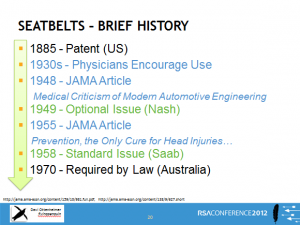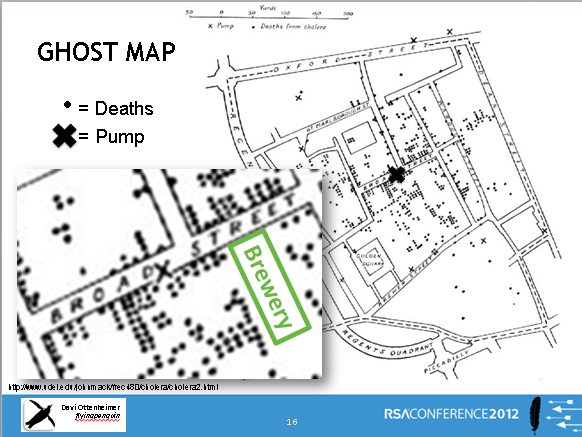The Economist in 2011 made a salient point about the future of gasoline vehicles:
For Toyota, taking BMW’s diesel engines is a tacit admission that its hybrid strategy does not cut it in Europe.
That means a gasoline-hybrid strategy is failing. A diesel-hybrid strategy, however, would have worked.
Two years later, today, the Economist admits the race is over. Diesel has won. Gasoline is dying.
The Toyota Prius hybrid? A lowly twentieth on the league table of the most economical fuel-sippers, with 4.2 litres/100km, along with higher emissions of carbon dioxide. The 19 cars having better fuel economy than the Prius hybrid are all clean diesels.
It really makes you wonder why we don’t have a hybid-diesel option instead of a hybrid-gasoline in America. At least GM has finally taken the lead domestically by releasing a passenger-car diesel option. It’s not the car they talked about in 2008, but it’s a start.
The Economist, however, is still thinking about the past. Instead of pointing out modern diesels already are available in America, they tell us diesels are on their way and Mazda is “leading”. This sounds like nonsense to me:
Later this year, Americans will get their first chance to experience what a really advanced diesel is like—and why Europeans opt for diesels over hybrids, plug-in electrics and even petrol-powered cars. [Mazda’s] diesel has 30% better fuel economy and provides oodles more pulling power. Good as the petrol version is, motorists who choose it over the diesel will miss out on a lot.
I’ll tell you why their “first chance” talk is nonsense. Look at the Economist analysis of what has changed.
“What marks this latest generation of diesel engines from even their ‘common-rail’ predecessors of the late 1990s…”
That’s a 20-year old reference — too far back to talk about predecessors. Several major generations of engine have hit American shores in-between the “late 1990s” and today. Why not compare current engines with those Americans have been driving in the 2000s?
Most notably was a major shift in 2004 when California regulated small passenger diesels out of the state (politics prevented regulation of the larger engines until later). Another major point was in 2008 when they re-appeared. This was no secret to the Economist. They wrote about it in an article called “Diesel’s second coming.”
America’s first chance to experience new diesel engine technology was around 2005 (when new VW TDIs were introduced) and then again in 2008 (when VW’s diesel won car of the year). I would call 2004 and 2008 models the predecessors, taking us into the late-2013 technology.
So much for America’s “first chance”.
Perhaps it is fair to say some people haven’t really been excited by diesel engines since the 1990s (the Economist gave Fiat Research an award) but who cares if those people have been asleep at their wheel since then. The Economist is not excused from doing research on the past decade of innovation.
It has been clear over the past ten years that diesel has achieved a pole position for increasing mpg while reducing emissions and providing performance and power. Combined with an electric motor, we’re talking over 100 mpg and a fun driving experience. Volvo sold-out every diesel-hybrid targeted for France before they even left the factory.
Still, some are confused. Editors at Forbes offer us this non-prediction:
…it’s not yet obvious whether electric vehicles, diesels, or even compressed natural gas vehicles (there are millions in countries such as Iran and Brazil) will ultimately take the checkered flag in the race for efficiency
Millions in Iran? Never thought I would hear Forbes suggest Iran as a model of efficiency. Experts on Iran seem to paint it in the opposite light, a study of waste and unsustainable inefficiency:
…poor resource management have contributed to rapidly growing energy consumption and high energy intensity for the past decades.
What Forbes is really saying is “let’s study engines in countries with domestic natural resources”. This is NOT a good equation. No wonder Forbes is confused.
To me there is no question. The race for efficiency is really a race for freedom from resource dependence, related to national security. Diesel = winning.
The answer is obviously diesel-hybrid, given American driver habits/needs. No other engine competes when it comes to sustainability. As I have written here since 2005, it is the safest, easiest to deploy, most-resilient and yet best performing of all. It is no coincidence the military prefers diesel.
Natural gas presents an interesting alternative to the pollution of coal plants but, as the Economist itself has written in the past, it fails miserably with a car engine. It gets about the same mpg as gasoline with far less performance. Same problem as ethanol. That means a significant cost added to manufacturing with marginal benefits.
Electric vehicles are great performers, perfect for urbanites, yet they lack range and cost far too much to enter the market at a broad base. They also have major additional costs to factor such as battery maintenance and replacement, not to mention the occasional unexplained explosion and fire (e.g. even Boeing claimed they didn’t see it coming).
Both natural gas and electric also require an overhaul to American infrastructure to enable vehicles with special engines. That’s a pipe-dream (pun intended) and about as likely as hydrogen. When you think about how long broadband has taken to be upgraded in America, and how inexpensive that infrastructure is compared to fuel lines…
I wouldn’t bet against diesel-hybrid.




